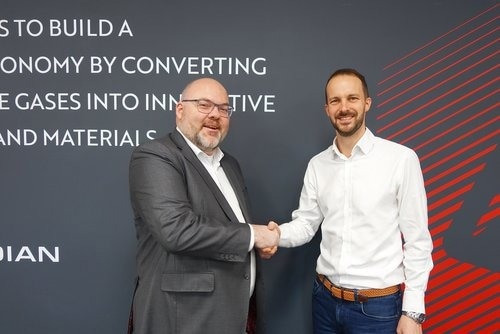A deal struck between UK climate tech company Levidian and Luxembourg construction company Stugalux brings unique, innovative decarbonisation technology to mainland Europe for the first time.
 Joel Schons (MD, Stugalux) and John Hartley (CEO, Levidian) in Levidian HQ. Image Credit: Levidian Nanosystems Limited
Joel Schons (MD, Stugalux) and John Hartley (CEO, Levidian) in Levidian HQ. Image Credit: Levidian Nanosystems Limited
Levidian’s LOOP device uses a patented low temperature, low pressure process to crack methane into its constituent atoms, hydrogen and carbon, without the need for catalysts of additives.
The carbon is locked away in the form of graphene, which is the thinnest and strongest material ever discovered, and is used to produce more sustainable, durable, and high-performance materials.
Stugalux will be deploying LOOP to process biomethane produced from food and agricultural waste. This gas will be cracked into its constituent atoms by LOOP, with the resultant hydrogen-rich blend combusted in a turbine to generate electricity while reducing carbon emissions.
The graphene produced by LOOP will be integrated into the building products used by Stugalux to improve performance and drive further decarbonisation.
Stugalux will initially deploy a LOOP20 on the site. Once this process is ready to be enhanced, two LOOP100 systems will be deployed by 2025, to scale up the decarbonisation operation.
“Stugalux is a fantastic example of how a LOOP system can be used to decarbonise in three ways simultaneously,” comments Levidian CEO, John Hartley. “By processing agricultural biomethane, these LOOPs will be utilising waste gas, delivering hydrogen to power, and embedding graphene to decarbonise construction products. This is an incredible way to demonstrate the circularity of LOOP contributing to a cleaner economy.”
Joel Schons, owner of Stugalux, explains: “Together, the three LOOP systems will process nearly 250,000 cubic meters of waste gas per year, producing more than 30 tonnes of graphene and preventing 572 tonnes of CO2e every year. Moreover, the application of graphene enhanced materials in our residential constructions will significantly drive the reduction of the carbon footprint.”